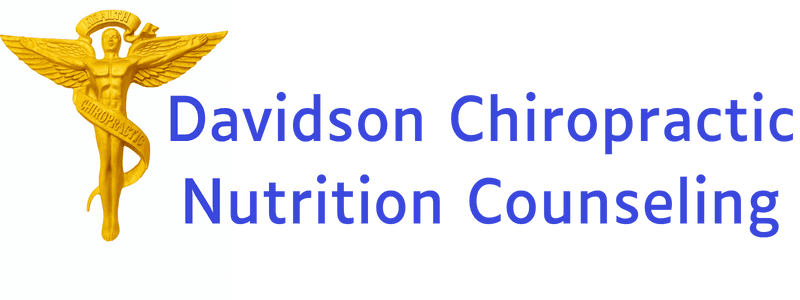Cardiovascular Health
Heartbeat Harmony: Nourish Your Cardiovascular Future with Dr. Eric Davidson
In the bustling heart of Appleton, Wisconsin, where the Fox River flows steadily and life moves at a purposeful pace, Dr. Eric Davidson stands as a beacon of holistic wellness. As a dedicated chiropractor with over 30 years of experience, Dr. Davidson doesn't just adjust spines—he empowers patients to reclaim their vitality from the inside out. Today, we're diving deep into the world of cardiovascular system disorders, those silent disruptors that can steal your energy, joy, and years. But here's the empowering truth: you don't have to be a victim of heart disease. With targeted nutrition and a healthy diet, you can fortify your cardiovascular fortress and thrive.
How do you know if you are truly healthy?
How good you feel is not the best indicator of how healthy you are. Typically, the first sign of heart disease is sudden death from a heart attack. Certain tests, when read properly, will indicate whether or not you are progressing toward a serious illness. Why not get tested properly to try to prevent those problems before they start?
Imagine waking up each morning with a steady pulse of energy, free from the shadows of fatigue, chest discomfort, or unexplained breathlessness. Cardiovascular disorders affect millions—high blood pressure, coronary artery disease, arrhythmias, and more—but they're not inevitable. Through science-backed dietary strategies, you can lower cholesterol, reduce inflammation, and support arterial health. And under Dr. Davidson's expert care, this journey becomes personalized, blending nutritional wisdom with chiropractic adjustments that optimize your body's alignment for peak circulatory flow.
In this comprehensive guide, we'll explore the intricacies of cardiovascular disorders, unpack how a nutrient-rich diet serves as your most potent ally, and arm you with actionable steps to transform your health. By the end, you'll feel inspired to take that first step: scheduling a consultation with Dr. Davidson. Because when your heart beats stronger, so does your life. Let's begin.
Unmasking Cardiovascular Disorders: The Hidden Threats to Your Vital Engine
Your cardiovascular system is a marvel of engineering—a dynamic network of the heart, blood vessels, and blood that delivers oxygen and nutrients to every cell while whisking away waste. It's the engine powering your daily adventures, from chasing kids at Houdini's Park to savoring a quiet evening walk along the river. Yet, when disorders strike, this system falters, leading to a cascade of challenges that touch every aspect of well-being.
Let's start with the basics. Hypertension, or high blood pressure, is the silent assassin, affecting nearly half of adults in the U.S. It exerts undue force on artery walls, straining the heart and increasing risks for stroke and heart failure. Symptoms? Often none until it's too late—headaches, dizziness, or nosebleeds might whisper warnings, but many live unaware.
Arrhythmias disrupt the heart's electrical rhythm, causing irregular beats that range from harmless flutters to life-threatening fibrillation. Atrial fibrillation (AFib), for instance, heightens stroke risk by allowing clots to form in the atria. And don't overlook peripheral artery disease (PAD), where legs ache during walks due to narrowed vessels, or heart failure, where the pump weakens, leading to swelling, fatigue, and breathlessness.
What causes these? A perfect storm: genetics play a role, but lifestyle dominates. Chronic inflammation from processed foods, excess sugar, and trans fats oxidizes LDL cholesterol, turning it into arterial plaque. Stress hormones like cortisol constrict vessels, while insulin resistance from sugary diets promotes fat storage around the midsection—visceral fat that's a cardiovascular time bomb.
In Appleton, where winters encourage cozy indoor habits and summers tempt with cheese curds and brats, it's easy to fall into traps. But knowledge is power. Studies from the American Heart Association show that modifiable risks—like diet—account for 80% of heart disease cases. By addressing these through nutrition, you can halt progression and even reverse damage.
Dr. Davidson sees this daily: patients arriving with elevated readings, worried scans, or family histories of early loss. His approach? Not just symptom management, but root-cause reversal. "Your heart isn't isolated," he says. "It's intertwined with your spine, nerves, and gut—all optimized through alignment and nourishment." Ready to learn how diet flips the script? Let's dive in.
The Power of the Plate: How a Healthy Diet Transforms Cardiovascular Health
If your cardiovascular system is the engine, diet is the premium fuel that keeps it purring. Forget fad diets or quick fixes—the real magic lies in sustainable, anti-inflammatory eating patterns that nourish vessels, balance blood pressure, and fortify the heart muscle. Science backs this unequivocally: the DASH (Dietary Approaches to Stop Hypertension) diet slashes systolic pressure by 11 mmHg, rivaling medication. The Mediterranean diet reduces heart attack risk by 30%, per landmark PREDIMED trials.
At its core, a heart-healthy diet emphasizes whole foods that combat oxidative stress and endothelial dysfunction—the artery lining's vulnerability to damage. Start by ditching the villains: refined carbs spike blood sugar, fostering insulin resistance and fat accumulation. Trans fats in fried foods and baked goods harden arteries like concrete. Sodium overload—think processed meats and canned soups—retains fluid, hiking pressure.
Instead, embrace the heroes. Fruits and vegetables flood your system with antioxidants like vitamin C and flavonoids, which neutralize free radicals and relax vessels. A daily rainbow—berries for anthocyanins, leafy greens for nitrates that convert to nitric oxide (a natural vasodilator)—can lower CAD risk by 20%.
Whole grains like oats and quinoa provide soluble fiber that binds cholesterol in the gut, escorting it out before it clogs pipes. Beta-glucan in oats alone drops LDL by 5-10%. Legumes—beans, lentils—offer plant protein minus the saturated fats of red meat, stabilizing blood sugar and reducing homocysteine, a plaque promoter.
Healthy fats are non-negotiable. Omega-3s from fatty fish (salmon, mackerel) or walnuts thin blood, curb arrhythmias, and tame inflammation via EPA and DHA. Monounsaturated fats in olive oil and avocados boost HDL (good cholesterol) while shielding LDL from oxidation.
Hydration matters too—dehydration thickens blood, straining the heart. Aim for 8-10 glasses of water daily, infused with lemon for potassium punch.
But it's not just what you eat; it's the synergy. The Portfolio Diet, blending these elements, rivals statins in cholesterol reduction. Intermittent fasting, when guided properly, enhances autophagy—cellular cleanup that clears arterial debris.
For Appleton locals, this means shopping at farmers' markets for fresh produce or sourcing wild-caught fish from Lake Winnebago. Dr. Davidson tailors these principles to your life: "Nutrition isn't one-size-fits-all. We'll assess your biomechanics—how spinal misalignments affect digestion—and craft a plan that sticks."
Challenges? Cravings hit hard, especially with Wisconsin's dairy allure. Swap cheese for nut-based alternatives; use herbs over salt. Track progress with a food journal, celebrating wins like normalized BP readings. Over time, you'll notice sharper focus, sustained energy, and that elusive "lightness" in your chest.
This isn't theory—it's transformation. A Harvard study of 100,000+ participants found that shifting to a plant-forward diet cut cardiovascular mortality by 19%. Your plate is your prescription. Hungry for specifics? Next, the star nutrients.
Nutrient Deep Dive: Essential Building Blocks for a Resilient Heart
To treat cardiovascular disorders effectively, zero in on micronutrients that act like tiny repair crews. Deficiencies exacerbate risks—low magnesium stiffens arteries; scant potassium imbalances electrolytes, sparking arrhythmias. Here's your roadmap to replenishing them through food.
Omega-3 Fatty Acids: The Inflammation Tamers. These polyunsaturated powerhouses reduce triglycerides by 25-30% and prevent plaque rupture. Sources: 2-3 servings weekly of salmon (3 oz = 1,500mg EPA/DHA) or chia seeds (1 tbsp = 2,500mg ALA, converted to EPA/DHA). Pro tip: Grill with lemon to enhance absorption.
Potassium: The Pressure Regulator. This mineral counters sodium, easing vessel tension. Aim for 4,700mg daily—bananas (422mg each), sweet potatoes (541mg medium), or spinach (558mg cup cooked). A potassium-rich diet drops hypertension risk by 20%, per NIH data.
Magnesium: The Rhythm Keeper. It relaxes muscles, including vascular ones, and supports energy production in heart cells. Deficiency links to AFib. Load up on almonds (80mg/oz), dark chocolate (64mg/oz 70% cacao), or pumpkin seeds (150mg/oz). Bonus: It aids sleep, curbing stress-induced cortisol spikes.
Antioxidants: Vitamin C, E, and CoQ10. Vitamin C (citrus, bell peppers: 70-190mg/serving) regenerates vitamin E, which protects LDL from oxidation. CoQ10, vital for mitochondrial ATP in heart cells, depletes with age/statins—replenish via organ meats or broccoli (0.6mg/100g). Studies show 100-200mg supplemental CoQ10 halves heart failure symptoms, but food-first is ideal.
Fiber: The Cholesterol Sweep. Soluble types (psyllium, apples) trap bile acids, forcing the liver to use cholesterol to make more—lowering circulating levels. 25-30g daily from oats (4g/½ cup) or pears (6g each) correlates with 15% lower CAD incidence.
Folate and B Vitamins: Homocysteine Controllers. Elevated homocysteine scars arteries; B6, B12, folate (leafy greens, fortified grains) detoxify it. A serving of lentils (358mcg folate) meets half your needs, slashing stroke risk.
Integrate these via mindful swaps: Breakfast oatmeal with berries and walnuts; lunch quinoa salad with kale and chickpeas; dinner baked cod with asparagus. Supplements? Only if tested deficient—Dr. Davidson can order panels to pinpoint gaps.
Real results? Patients report stabilized rhythms within weeks, echoing trials where nutrient optimization reversed early atherosclerosis. Your heart craves these allies—feed it well, and it'll reward you with vigor.
From Knowledge to Kitchen: Practical Meal Plans and Recipes for Heart Heroes
Theory ignites; action endures. Here's a 3-day starter plan for cardiovascular revival, clocking 1,800-2,000 calories, low-sodium, high-fiber. Customize with Dr. Davidson's input.
Day 1: Berry Blast Focus
Breakfast: Overnight oats (½ cup oats, 1 cup almond milk, ½ cup blueberries, 1 tbsp chia, walnuts). (Fiber: 10g; Omega-3: 3g)
Lunch: Grilled chicken salad (3oz lean breast, mixed greens, cherry tomatoes, cucumber, olive oil vinaigrette). Potassium: 800mg.
Dinner: Baked salmon (4oz) with quinoa (½ cup) and steamed broccoli. Magnesium: 120mg.
Snack: Apple with almond butter.
Day 2: Green Machine
Breakfast: Smoothie (spinach handful, banana, Greek yogurt, flaxseeds). Antioxidants galore.
Lunch: Lentil soup (1 cup) with whole-grain roll and side salad.
Dinner: Turkey stir-fry with bell peppers, onions, brown rice. Vitamin C: 150mg.
Snack: Dark chocolate square and orange.
Day 3: Nutty Nourish
- Breakfast: Avocado toast on whole-grain (½ avocado, poached egg, tomatoes).
- Lunch: Chickpea wrap (hummus, veggies in spinach tortilla).
Dinner: Veggie stir-fry with tofu, sweet potato, kale. CoQ10 boost from broccoli add-in.
Snack: Yogurt parfait with pomegranate seeds.
Quick Recipe: Omega-Omega Salmon Bowl (Serves 2; Prep: 20 min)
Ingredients: 8oz salmon fillets, 1 cup cooked farro, 1 avocado sliced, 2 cups arugula, 1 lemon, 1 tbsp olive oil, salt-free herbs.
Instructions: Season salmon with lemon zest, bake at 375°F for 12-15 min. Toss farro with oil, layer with greens and avocado. Top with flaked salmon. Per serving: 450 cal, 25g healthy fat, 12g fiber.
Track with an app, adjust portions. These meals not only treat disorders but prevent them—lowering CRP (inflammation marker) by 20% in adherent followers.
The Chiropractic Edge: Why Dr. Davidson's Integrated Approach Wins
Chiropractic care amplifies nutrition's impact. Misalignments in the cervical or thoracic spine can impinge nerves controlling circulation and digestion, hindering nutrient uptake. Dr. Davidson's gentle adjustments restore flow, enhancing vagal tone for better heart rate variability. Paired with diet, it's synergy: patients see 15-20% BP drops faster.
In Appleton, his office offers free initial assessments, personalized nutrition blueprints, and ongoing support. "We're not curing overnight," Dr. Davidson notes, "but we're building resilience—one aligned vertebra, one vibrant meal at a time."
Your Heart's Call to Action: Schedule with Dr. Davidson Today
You've journeyed through the disorders dimming lives and the dietary dawn breaking them. Now, envision your stronger heartbeat—vibrant, unburdened. Dr. Eric Davidson is here in Appleton to guide you: compassionate, evidence-based, transformative. Don't wait for symptoms to shout. Contact us now at (920) 257-4011 or visit us at 2110 S Memorial Drive, Appleton, WI 54915. Your first consultation is a step toward harmony—where nutrition meets alignment for a heart that sings.






